Volume 43
Displaying 1-15 of 15 articles from this issue
- |<
- <
- 1
- >
- >|
-
Article type: Cover
1967 Volume 43 Pages Cover1-
Published: September 10, 1967
Released on J-STAGE: November 09, 2017
Download PDF (505K) -
Article type: Cover
1967 Volume 43 Pages Cover2-
Published: September 10, 1967
Released on J-STAGE: November 09, 2017
Download PDF (505K) -
Article type: Article
1967 Volume 43 Pages 1-5
Published: September 10, 1967
Released on J-STAGE: November 09, 2017
Download PDF (443K) -
Article type: Article
1967 Volume 43 Pages 6-34
Published: September 10, 1967
Released on J-STAGE: November 09, 2017
Download PDF (1416K) -
Article type: Article
1967 Volume 43 Pages 35-41
Published: September 10, 1967
Released on J-STAGE: November 09, 2017
Download PDF (330K) -
Article type: Article
1967 Volume 43 Pages 42-51
Published: September 10, 1967
Released on J-STAGE: November 09, 2017
Download PDF (621K) -
Article type: Article
1967 Volume 43 Pages 52-59
Published: September 10, 1967
Released on J-STAGE: November 09, 2017
Download PDF (689K) -
Article type: Article
1967 Volume 43 Pages 60-69
Published: September 10, 1967
Released on J-STAGE: November 09, 2017
Download PDF (807K) -
Article type: Article
1967 Volume 43 Pages 70-84
Published: September 10, 1967
Released on J-STAGE: November 09, 2017
Download PDF (740K) -
Article type: Article
1967 Volume 43 Pages 85-89
Published: September 10, 1967
Released on J-STAGE: November 09, 2017
Download PDF (367K) -
Article type: Article
1967 Volume 43 Pages 90-
Published: September 10, 1967
Released on J-STAGE: November 09, 2017
Download PDF (124K) -
Article type: Article
1967 Volume 43 Pages 91-92
Published: September 10, 1967
Released on J-STAGE: November 09, 2017
Download PDF (210K) -
Article type: Article
1967 Volume 43 Pages 93-95
Published: September 10, 1967
Released on J-STAGE: November 09, 2017
Download PDF (155K) -
Article type: Article
1967 Volume 43 Pages 96-97
Published: September 10, 1967
Released on J-STAGE: November 09, 2017
Download PDF (143K) -
Article type: Article
1967 Volume 43 Pages 98-103
Published: September 10, 1967
Released on J-STAGE: November 09, 2017
Download PDF (426K)
- |<
- <
- 1
- >
- >|
